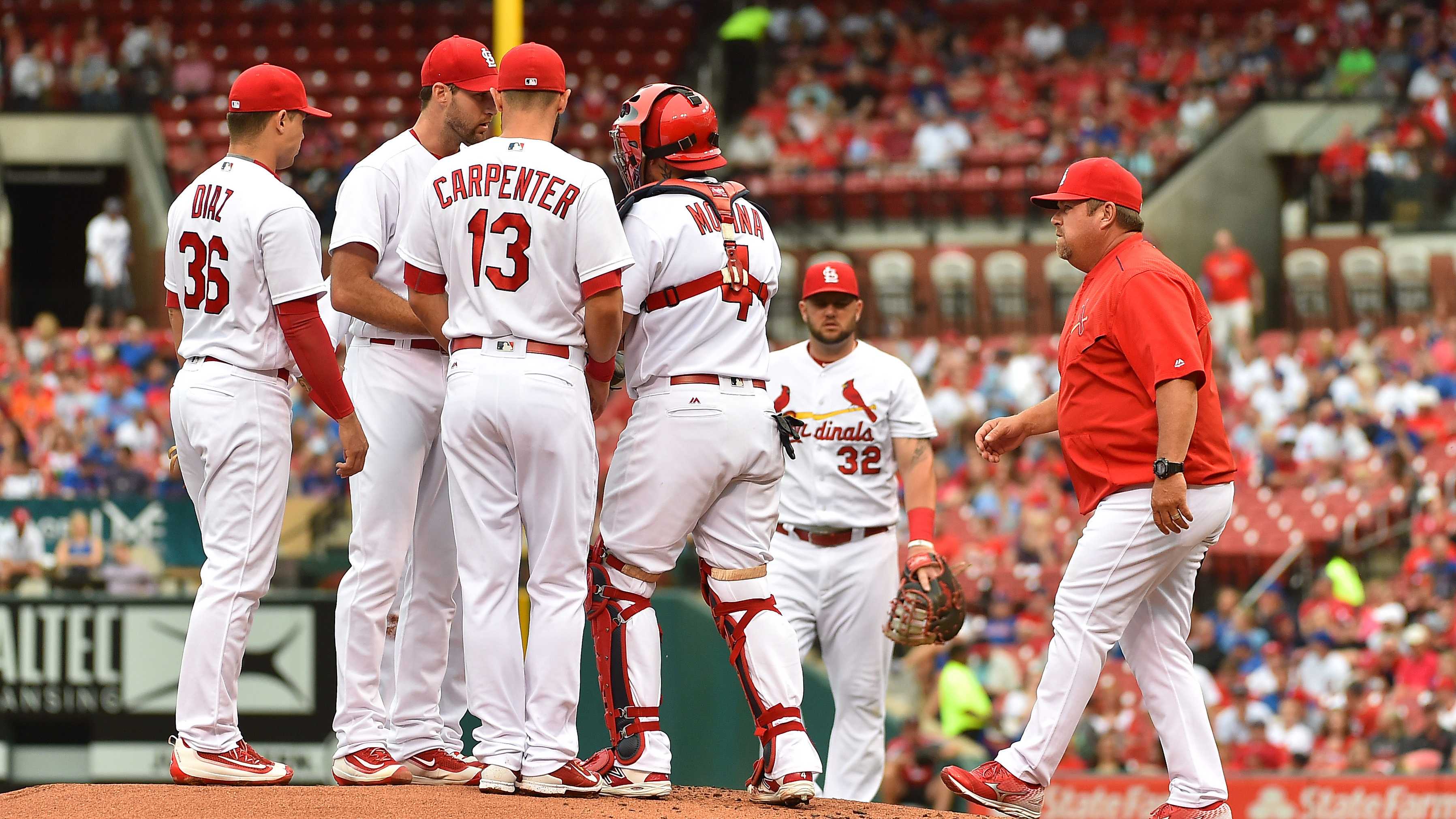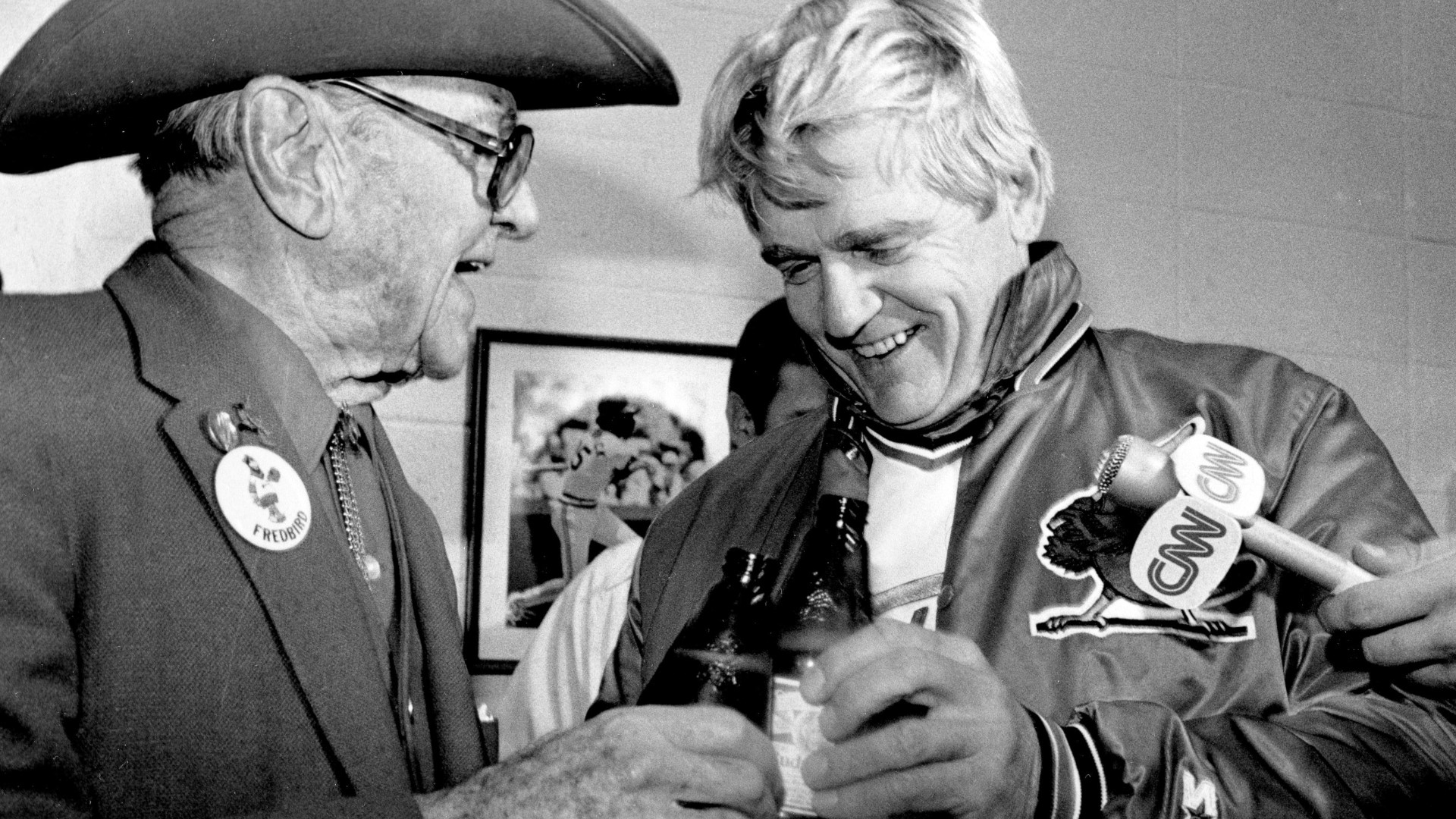WASHINGTON, D.C. — Finding the best path to 27 outs is perhaps baseball’s most evolving and enduring puzzle. Yet in many quarters, a permanent solution appears at hand.
“Some form of bullpenning,” Seattle Mariners general manager Jerry Dipoto says of the art of limiting starting pitchers’ exposure while optimizing reliever use, “is the future of baseball. It’s just a matter of the extremity.”
After all, voluminous statistics show that starting pitchers are less effective in their third and fourth trips through the batting order. More than ever, bullpens are bursting with arms flirting with the 100-mph mark on the radar gun.
So, that’s settled. Marginalize the starting pitcher, turn the firemen loose and watch the win expectancy rise. Easy, right?
Then again...
“The direction the game and organizations are going in,” says Tampa Bay Rays ace Chris Archer, “is creating the expectation to be mediocre.”
Archer is paid to pitch deep in games – he topped 200 innings for a third consecutive season in 2017 - but he’s part of a diminished fraternity. In 2017, starting pitchers averaged 5.5 innings per outing, the lowest figure in history. For the second consecutive season, just 15 pitchers reached the 200-inning plateau, once considered a modest measure of durability.
That number is falling quickly – there were 28 200-inning guys in 2015, 50 in 2005 – and it will keep tumbling. Eight of the 15 200-inning pitchers last year were at least 30 years old. Organizations are loathe to push the limits of their top pitching prospects in the minor leagues, lest they get hurt before taking a big league mound.
Once they arrive, the ball is taken from their hands sooner and sooner, decreasing the likelihood they find out how their stuff plays in the late innings.
Suddenly, “five-and-dive” is the norm, rather than a badge of pitching dishonor. And the ace is more and more an endangered species.
“I think those horses – and that stable is becoming smaller – that can withstand 200-plus innings, they’re invaluable,” says St. Louis Cardinals pitching coach Mike Maddux.
So what, then, will the future of pitching look like? The answer will be shaped by a diverse set of factors: Money, machismo, asset protection and an industry that has yet to bump up against the limits of analytics.
Right now, the trend is tilting hard toward "less is more."
There’s sound reasoning for that: Last year, major league hitters produced a .731 on base plus slugging (OPS) facing a starter for the first time. That increased to .779 the second time through an order and .801 the third time; the pitchers’ strikeout-walk ratio tumbled from 2.83 to 2.47 to 2.22.
Meanwhile, relievers facing a batter for the first time produced a .720 OPS and recorded a strikeout in 24% of plate appearances, compared to 18% for starters on their third go-round.
Little wonder, then, that New York Mets GM Sandy Alderson called such evidence “irrefutable” in signaling a change in the club’s pitching philosophy. Or that Archer’s Rays are launching – for at least the season’s first several weeks – a four-man rotation with the fifth slot a “bullpen day” in which several relief arms will cover all nine innings.
Dipoto’s Mariners staff has a potential Hall of Famer in Felix Hernandez and a budding All-Star in lefty James Paxton. Yet, like many in the game, he firmly believes it’s harder finding four durable starters than identifying a group of two dozen reliable, fungible arms, regardless of role.
“We look at building a pitching staff as not just 1 through 12, but 1 through 20,” he says. “And they’re not going to be household names. They’re not going to be guys that are on the front page of USA TODAY.
“They’re going to be guys that most fans have never heard of, but that our scouts, that our analysts believe can come in and, when it’s their time to step in, get us across bridges.”
The Mariners deployed 18 starters and 40 pitchers last season, which Dipoto acknowledges is far from ideal. But such an outcome is hard to avoid when limiting starter exposure.
The need to lean on relievers for multiple-inning stints creates a constant roster churn – a reliever in need of rest shipped to the minors for a fresh arm.
“Optionable, flexible young relievers who can come on and off your roster are now like gold,” says Dipoto, who turned one of those assets, Emilio Pagan, into full-time first baseman Ryon Healy in an offseason deal with Oakland.
"They’re hard to grab on to. And when you have them, you must take care of them, because they’re hugely valuable.”
Archer believes the Rays’ deep, talented stable of relievers make them uniquely equipped to thrive under their plan, but also notes that “bullpenning” involves a significant human element.
And not every reliever summoned will match the dominance of one-time starters turned power relievers such as the New York Yankees’ Chad Green - who struck out 103 batters in 69 innings last year - and the Arizona Diamondbacks’ Archie Bradley.
“It’s sexy, and in the playoffs when you have starters pitching out of the bullpen, it seems like a good mentality,” he says. “But over the course of 162, and you have guys on the Triple-A shuttle – which means they’re not good enough to be solidified in the big leagues - pitching in high-leverage situations instead of the starter, I don’t think it’s conducive to long-term success, to winning the amount of games it takes to get to the playoffs.
“Think about the psychology of that guy trotting in: He knows after he pitches two innings tonight, he’s gone. I think you’ll be more successful, like the Nationals, who at the beginning of the season did not have a good bullpen, but they had four starters who were absolutely holding it down. Even when their bullpen was struggling, they were up 15 games in their division.”
Indeed, the Nationals won 97 games and the NL East title while featuring two of the game’s 15 200-inning guys - Cy Young Award winner Max Scherzer and Gio Gonzalez. Another starter, Stephen Strasburg, completed at least seven innings in 14 of his 28 starts.
Of course, that comes at a cost: Scherzer ($215 million) and Strasburg ($175 million) are both signed to seven-year deals. According to USA TODAY Sports’ salary data base, the average starter earned $6 million in 2017, the average reliever $2.3 million, and shuttling pitchers to the minor leagues also suppresses their service time as they crawl toward the six-year finish line to free agency.
Like many trappings of the analytics era, efficiency often leads to cost containment.
“Smart businesspeople,” says Archer, “are going to try and have their costs lower.”
And finding durable starters is becoming as much a supply problem as it is a financial one.
When Brandon McCarthy was drafted by the Chicago White Sox out of a Colorado junior college in 2002, he’d already thrown 90 innings as an 18-year-old amateur, and added 80 more in rookie ball, a staggering 170-inning total. In his second full year of pro ball, he started 27 games and threw 172 innings.
Such handling would be unheard of in this era of 65- and 75-pitch minor league pitch limits, gradual seasonal inning increases and the practice of piggybacking starters in the low minors.
“It sounds crazy now,” says McCarthy, now 34 and a starter for the Atlanta Braves. “But I felt fine doing it then, and it felt natural. It was like, ‘I’m a starter and I’m in pro baseball now and I pitch every five days, and this is what will happen in the big leagues.’
“Now, it’s a little different. I kind of wish there was a little more aggression with it. There are arms that can take it. You see guys in the big leagues who are horses. You can ask a little more from guys.”
Says Blue Jays catcher Russell Martin: “I think there’s a fine line between protecting somebody and hindering progression.”
McCarthy and Archer agree it’s impossible to learn how to pitch late in games if never afforded the opportunity. McCarthy, who’s overcome multiple shoulder fractures and Tommy John surgery to pitch 12 major league seasons, can appreciate why teams might want to follow his command-based approach with a succession of fireballers – sooner the better.
“Being a starter, the old way was awesome,” he says. “But there’s so many quality arms in baseball now. One thing we know is that velocity always kind of wins. It’s not completely fail-safe, but it does move in a linear fashion with success.
“So, if most organizations have 15 to 17 guys, or at least 13 guys who throw hard, they have the numbers to match up better. It certainly seems easier to do that now than it is to bring three guys up at one time and hope that all of your super prospects end up being 215-inning guys.”
Last year’s World Series matchup revealed both the upside and perils of modern pitching usage. The Astros ran away with the AL West despite having no pitcher throw more than 153 innings. Yet, they probably don’t advance to the World Series without their Aug. 31 acquisition of Justin Verlander, who has exceeded 200 innings in 10 of his last 11 seasons and earned ALCS MVP honors with two dominant outings.
The Dodgers, meanwhile, manipulated their staff masterfully throughout a 104-win season, with a combination of financial might, progressive use of the newly installed 10-day disabled list and 27 largely excellent starts from Clayton Kershaw.
Their championship hopes turned in a Game 2 World Series loss when starter Rich Hill was pulled after facing 18 batters, trailing just 1-0. The Dodgers eventually took a 3-1 lead, and their bullpenning gambit nearly produced a 2-0 Series advantage.
Closer Kenley Jansen, though, was asked to go two innings, and gave up single runs in the eighth and ninth inning. McCarthy, thrust into an unfamiliar role in the 11th inning, yielded the go-ahead runs and the series turned in Houston’s favor.
“If you have Rich go back out and you know the numbers say he (shouldn’t), and a run or two is given up and you never have the chance for Kenley to get in the game with a lead, you’re asking the question on the other side,” says McCarthy. “If the number is 55-45 in your favor – if it just leans a little bit – I guess you take that.”
As for 2018? It will very likely extend a pattern going on since 1908, when Ed Walsh threw 464 innings for the Chicago White Sox, after which high-water marks for starters began steadily sinking. In 1980, the Phillies’ Steve Carlton produced the last 300-inning season, and the next century mark is now in peril.
Then again, the Astros will defend their title with a full season of Verlander, a healthy Dallas Keuchel and new addition Gerrit Cole, one of those rare 200-inning guys last year. And as Blue Jays GM Ross Atkins notes, we still haven’t seen the long-term effect of bullpenning on relievers and staffs as a whole.
Maybe the horse isn’t dead yet.
“This game, historically, has shown pretty dramatic shifts and I think the resolution lies somewhere more centric,” says Blue Jays reliever Craig Breslow, the Yale grad who figures to work in a front office someday. “I think we need to give ourselves a little distance before we determine whether this is a generational shift, or just maybe a temporary trend.
“This is kind of an overshift.”


